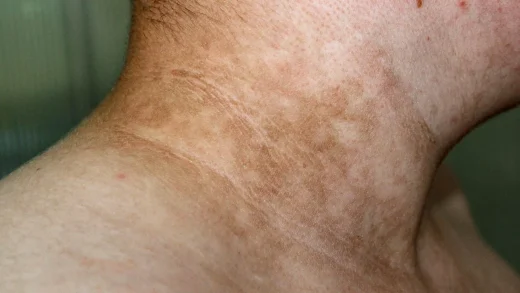What is acanthamoeba keratitis?
An uncommon parasitic eye infection caused by a particular kind of amoeba is known as acanthamoeba keratitis (AK). The cornea, your eye’s transparent, dome-shaped front covering, is impacted. It can harm your eyes and lead to blindness if left untreated.
There are other names for this condition, such as “amoebic keratitis.” Although it can affect both eyes, AK typically affects one at a time. The epithelium, the outermost layer of your cornea, is first affected. Deeper infection is the result of worsening conditions.
Understanding acanthamoeba
An amoeba is a single-celled organism. It‘s similar to bacteria but a little more complex. It isn‘t a true parasite because it can go through its entire life cycle without needing to infect humans or any other animals. But amoebas act like parasites when they infect humans or animals.
Scientists know of at least 20 species of acanthamoeba worldwide. They can live almost anywhere humans do, and they easily survive in freshwater, seawater, soil and many other places. Researchers know of eight (possibly nine) acanthamoeba species that can cause AK.
During their life cycles, acanthamoeba can take two forms. One is their active, mobile form. The other is their cystic form. This form involves a toughened outer layer. In cyst form, acanthamoeba can survive all kinds of threats that would kill them otherwise.
That includes:
- Extreme temperatures. In cyst form, acanthamoeba can survive temperatures ranging from -4 degrees Fahrenheit to 132 degrees Fahrenheit (-20 degrees Celsius to 56 degrees Celsius).
- Lack of nutrients and water. Acanthamoeba in cyst form can survive up to 20 years (maybe more) at room temperature.
- Chemicals and toxins. Acanthamoeba in cyst form can resist the toxic effects of many substances, including medications that treat parasitic infections.
- Sunlight. The ultraviolet (UV) rays in sunlight can kill many microbes, but acanthamoeba in cyst form can survive.
Knowing that is important because acanthamoeba can enter your body in both active and cystic forms. That’s why you should take proper precautions to prevent them from infecting you.
How common is this condition?
AK is rare overall. Research indicates there could be up to 1,500 cases in the U.S. each year.
Symptoms and Causes
What are the symptoms of acanthamoeba keratitis?
The symptoms of AK happen when the active form of these microbes enters the corneas of your eyes. The symptoms may not remain constant, cycling back and forth between better and worse.
Symptoms include:
- Eye pain (sometimes severe).
- Feeling like something’s stuck in your eye (foreign body sensation), but washing your eyes doesn‘t help, and you can‘t see anything stuck there.
- Watery eye (epiphora).
- Light sensitivity (photophobia).
- Eye redness or irritation.
- Corneas that appear cloudy, dirty, or have a ring-shaped area on their surface.
- Blurred or clouded vision usually happens in severe or advanced cases.
What causes acanthamoeba keratitis?
Two species of acanthamoeba cause most cases of AK (experts abbreviate “acanthamoeba” to “A.” in the species names). The two species are A. castellani and A. polyphaga.
AK is infectious (meaning you can catch it), but it isn’t contagious (you can’t directly catch it from someone else).
The most common ways for acanthamoeba to infect your eyes are:
- Contact lenses.
- Contaminated water.
- Eye injuries.
Contact lenses
Contact lens wearers make up at least 90% of AK cases. That’s usually because of a combination of factors. The factors include:
- Wearing contacts for too long.
- Improperly storing contact lenses when not wearing them (such as using tap water to clean or store your contacts).
- Incorrectly cleaning contact lenses or the cases you store them in.
- Wearing contact lenses while swimming or showering.
- Using contaminated contact lens-related items, like storage cases or solutions.
Contaminated water
Acanthamoeba can survive in water easily, especially in cyst form. Even treated drinking water, bottled water or swimming pool water may not have a high enough chlorine concentration or other disinfectants. That’s why you should never use tap water with contacts or wear contacts while swimming.
Under ordinary circumstances, acanthamoeba from these sources can’t infect your eyes. But there are times when they can. Some include:
- If you have an existing eye infection,.
- If you have an eye injury (like a corneal scratch or similar condition),.
- If you’re immunocompromised,.
Eye injuries
The cornea is like your eye‘s windshield, but injuries make it less effective. The injuries are like weak points or small gaps in the cornea surface where it‘s easier for microbes to get in. Injuries to your corneas usually involve contact lenses, your fingers or fingernails, plants or plant material, or dirt or soil.
What are the complications of acanthamoeba keratitis?
There are a few main complications that are possible with AK:
- Loss of sight. AK damages your corneas, which can lead to loss of sight in the affected eye(s).
- Recurrence. Acanthamoeba in cyst form can live in your corneas for extended periods and return to their live forms later.
- Disruption in daily routine and activities. It‘s usually a painful and disruptive condition. It can interfere with work, hobbies, spending time with loved ones and more.
Diagnosis and Tests
How is acanthamoeba keratitis diagnosed?
AK is tricky to diagnose early on, and an initial misdiagnosis happens in about 75% to 90% of cases. That’s because of the following:
- It has the same symptoms as more common viral or bacterial eye infections.
- AK is rare, so eye care specialists and healthcare providers usually don’t suspect it at first.
- The tests involve a scraping or biopsy of the cornea (which is invasive) or equipment that isn‘t available outside major medical centers.
Your eye care specialist will do an eye exam, including a slit lamp exam. That lets them look into your eyes for signs or clues. They’ll also ask about your symptoms, recent activities or if there could be other contributing factors.
The standard practice is to treat any eye infection as if it were viral or bacterial first and suspect it’s AK if treatment doesn’t work. If it doesn’t, your eye care specialist will likely recommend starting treatment for AK.
Corneal tissue tests
Testing for AK may involve taking samples of corneal tissue. That can involve:
- Corneal scraping. To run this test, an eye specialist will take a sample of your cornea’s outermost layers for testing.
- Corneal biopsies. This involves taking a larger tissue sample than with scraping. The main advantage is that it can detect deeper infections than a scraping test.
These two tests have the potential to cause pain and are more invasive. However, your provider will assist with that by using numbing drops or medication. Additionally, corneas regenerate swiftly, minimizing the duration of pain or discomfort following a biopsy or scraping.
Results from corneal tissue testing may not be available for several days. In the interim, your doctor will probably start treating your symptoms.
Management and Treatment
How is acanthamoeba keratitis treated, and is there a cure?
Eliminating the infection and lowering pain and other bothersome symptoms are the two main objectives of treating AK. Medications are usually the first option, and surgery may be necessary in more severe cases.
Because AK is so uncommon, many of the more widely used medications are no longer available in the US. However, some pharmacies might be able to compound these drugs specifically for you. Your eye care specialist is the best person to tell you about medication options and where you might be able to get them.
Medications
Active forms of acanthamoeba are very sensitive to certain medications. In cyst form, acanthamoeba species can resist treatment, but some medications can still overcome that.
The main form of treatment is topical antiseptic drops, such as chlorhexidine and polihexanide (also known as polyhexamethylene biguanide, or PHMB).
Surgery
About 40% of AK cases don’t respond well enough to medication alone. When that happens, surgery may be the next best option. This can include:
- Epithelial tissue removal (debridement). This involves removing the outermost layer of the cornea, which may remove acanthamoeba living in the cornea (either in active or cystic form). It can also make it easier for medication to reach acanthamoeba in deeper layers.
- Tissue grafts or special bandages. Certain types of tissue transplants, like amniotic membranes or a bandage contact lens, can help your eye while it heals.
- Keratoplasty and corneal transplants. Removing the cornea may be the only treatment in some cases. Once removed, an eye care specialist can replace it with a cornea transplant.
Prevention
Can acanthamoeba keratitis be prevented?
AK is mostly preventable, though uncommon cases can happen for reasons you can’t control. Steps you can take include:
- Wear contact lenses as instructed. Don’t wear your contacts for too long; leave them in overnight or wear them while swimming or showering.
- Store your contacts properly. Never use anything but contact lens solution to store your contacts when you take them out. Your eye care specialist can tell you more about the right kind of solution to use.
- Clean your contacts and the case you store them in. Contact lens solution usually doesn’t disinfect your lenses. Your eye care specialist can tell you how to sanitize your contacts and contact lens case and how often you need to do this.
- Throw contacts away if you get an eye infection and replace the case. Reusing contaminated contacts or contact lens cases can cause reinfection.
- Avoid getting water directly in your eyes. If your eyes feel dry, use artificial tear drops that are intended for use in the eye. If you need to rinse your eyes, contact lens solution is safer than using tap water.
- Take precautions if you’re at higher risk for AK infection. If you have immune system issues or an eye injury that makes you vulnerable to an infection, don’t take chances. Avoid swimming or showering in ways that could allow AK in water (even treated water) to get into your eyes.
- Use eye protection to avoid injuries. AK infections are always a threat with eye injuries. Protecting your eyes keeps them safe from damage, which also keeps microbes out.
Outlook and Prognosis
What can I expect if I have acanthamoeba keratitis?
AK is a disorder that can be extremely painful and disruptive, frequently far more so than your other symptoms or obvious changes in your eyes would indicate. It is crucial that you do not ignore it because the longer you wait, the more difficult it is to treat.
Your eye care professional will first attempt to treat and/or rule out bacterial and/or viral infections if you have AK. If treatment does not seem to be working, make sure you follow up with them and know how long to wait before getting in touch with them again.
It is also critical to adhere to your doctor’s treatment recommendations exactly as prescribed. That offers you the highest probability of success. You run the risk of reinfection if you do not adhere to your doctor’s treatment recommendations. Additionally, the cyst form may remain dormant in your corneas for protracted periods of time, which may lead to the recurrence of AK symptoms months after treatment.
AK can cause severe and permanent damage if it goes untreated for too long. The possible complications include glaucoma, iris atrophy (shrinking or moving out of place), cataracts, and chronic defects in the cornea’s outermost layer. In more severe cases, major vision loss is possible.
What’s the outlook for this condition?
The outlook for AK depends on several factors. If you receive medical attention before this condition spreads to your cornea’s second layer, your chances of a positive outcome are significantly higher. This usually means that therapy should start no later than three weeks following the onset of symptoms.
If your symptoms of AK persist for more than a few days, you should consult an eye care professional. This will give them time to try antibiotics for bacterial infections; if those do not work, your eye doctor can have you start AK-specific treatment.
Additional Common Questions
Can acanthamoeba keratitis be cured?
Yes, AK is curable. This is easier to do when you get treatment sooner rather than later.
What are the odds of getting acanthamoeba keratitis?
AK is rare overall. You’re more likely to get it if you wear contacts and don’t maintain or store them properly. People with decreased immunity also have a higher risk.
Is acanthamoeba keratitis an emergency?
No, AK isn’t an emergency condition. But you need to make an appointment and see an eye care specialist as soon as possible.
How do I know if I have an amoeba in my eye?
There’s no way to tell if you have AK (or any other amoeba-related infection) on your own. Only certain medical tests can show it. If you think you might have AK, you need to see an eye care specialist for diagnosis and treatment.
A note from DocAdvice
AK is a rare, painful condition that can damage your eyes and cause vision loss if not treated quickly. Thankfully, taking a few easy precautions can help you avoid contracting this infection. If you wear contacts, make sure you wear, store, and maintain your contacts properly. Your eye care specialist can help you if you have questions about how to do this. And if you might have AK (or any other eye infection), don’t try to tough it out. Getting care quickly can treat eye infections and help you feel better sooner.





















